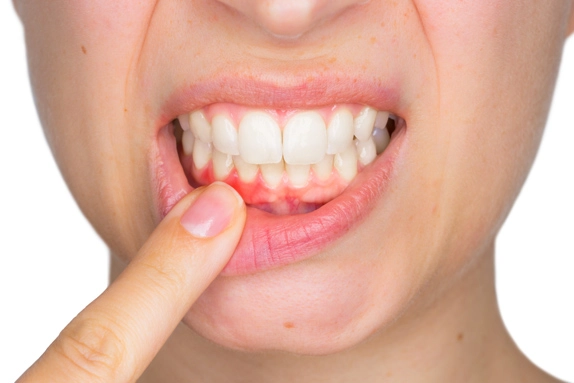
Periodontal disease, often called ‘gum disease’ describes a range of conditions that affect the supporting tissues of the teeth and roots. This may include the gingiva – ‘gums’ and also the deeper tissues of the bone and ligaments that connect the teeth to the bone.
The two main forms of gum disease are gingivitis and periodontitis.
Gingivitis
Gingivitis is the initial stage of gum disease. It is caused by the presence of plaque and calculus. The bacteria found in plaque produce toxins which irritate the gums and cause inflammation and swelling. This usually results in bleeding when brushing or flossing.
Gingivitis is treated by thorough and correct daily brushing and flossing, and professional removal of calculus and debris.
Left untreated, it can progress to periodontitis.
Periodontitis
Periodontitis is an inflammation and infection of the gums, ligaments and bone supporting the teeth.
It is the primary cause of tooth loss in adults and due to its painless nature, it can go undetected for years.
Chronic plaque and calculus accumulation on teeth stimulates the body’s immune system which ultimately causes damage to the gums, ligaments and bone, resulting in a gap or ‘pocket’ between the root and bone that holds the tooth in the jaw. Destructive bacteria survive in the pocket and can continue the progression of the disease and lead to tooth loss.
Treatment
The main causative factor of gum disease is bacteria. Management involves reducing the bacterial load to a level that the body’s defence mechanisms can handle.
Treatment involves customised cleaning of teeth above and below the gum margin and maintaining good home dental care.
Prevention is best!